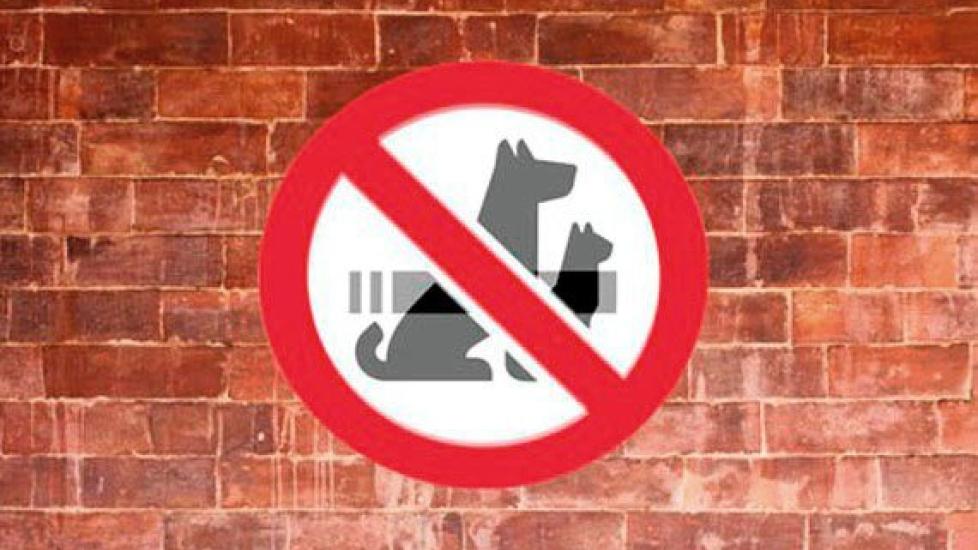Electronic Cigarettes Connected to Canine Fatalities
New and emerging pet toxicities are a topic I always find intriguing in the realm of veterinary medicine. After all, I’ve treated my fair share of unusual toxic exposures while working in emergency veterinary hospitals and also in my own Los Angeles-based holistic house call practice. I have treated poisonings from dietary supplements, marijuana and other recreational drugs (see the YouTube video Canine Cannabis Toxicity), dark chocolate covered macadamia nuts, Xylitol-based gum and candy, snail bait, etc.
Therefore, I was saddened but intrigued by a recent Huffington Post article about a U.K. dog, titled Dog Dies After Eating Electronic Cigarette Capsule.
Evidently, dog owner Keith Sutton dropped a nicotine capsule from his pocket, which was quickly picked up by Ivy, his 14-week-old Staffordshire bull terrier. The curious puppy didn't even consume the entire capsule, as Sutton reports Ivy “had chewed it and pierced the plastic container. She had only ingested the tiniest amount, but by the time I picked her up she was frothing at the mouth.”
Recommended Pet Products
- Nutramax Proviable Probiotics & Prebiotics Digestive Health Supplement for Dogs & Cats, 160 count$89.98Chewy Price
- Fera Pets USDA Organic Pumpkin Plus Fiber Support for Dogs & Cats, 90 servings$34.95Chewy Price
- All Four Paws Comfy Cone E-Collar for Dogs & Cats, Black, Small$20.24Chewy Price
- Virbac Epi-Otic Advanced Ear Cleaner for Dogs & Cats, 4-fl oz bottle$12.34Chewy Price
Within ten minutes Sutton had Ivy receiving treatment on an emergency basis by a veterinarian, but the toxic effects of nicotine had taken their toll and Ivy didn't survive.
Electronic cigarettes have grown in popularity over the past few years. Instead of smoking a flame-lit cigarette, smokers use electronic cigarettes to deliver a nicotine infused blast of vapor. This means of drug (and nicotine is a very addictive one) delivery has led to the term "vaping" being applied to the process of smoking an electronic cigarette.
Although lingering plumes of toxin-filled smoke are not produced from electronic cigarettes, there are still concerns that the vapor exhaled during vaping contains enough harmful substances to negatively affect the health of people and pets in close proximity to the “vaper.” Fortunately, major cities like Chicago, Los Angeles, and New York have extended their smoking bans to jnclude electronic cigarettes in bars, farmers' markets, parks, and restaurants.
Even more dangerous than the vapor are the capsules or cartridges contained within electronic cigarettes. According to the USA Today article, E-cigarettes: No smoke, but fiery debate over safety, the cartridges contain a combination of “nicotine, water, glycerol, propylene glycol (used in inhalers), and flavorings.”
According to Wikipedia, Nicotine is “a potent parasympathomimetic alkaloid found in the nightshade family of plants (Solanaceae) and a stimulant drug. It is a nicotinic acetylcholine receptor agonist. It is made in the roots and accumulates in the leaves of the plants.”
The Pet Poison Helpline (PPH) reports that nicotine is capable of causing a variety of moderate to severe toxic effects, depending on the dose consumed, which manifest in the following clinical signs:
- Vomiting
- Abnormal heart rate
- Incoordination
- Tremors
- Weakness
- Collapse
Besides electronic cigarettes, owners have to be careful with other products laced with the stimulant, such as nicotine gum and lozenges, raw tobacco (that which is chewed or inserted into a pipe or rolled in paper), and conventional cigarettes.
According to PPH:
Nicotine is a rapid acting toxin and, often, pets will show signs of poisoning within 1 hour of ingestion. Some types of nicotine gums also contain xylitol, a sweetener which is toxic to dogs. The acid in the stomach slows the absorption of nicotine so the administration of antacids (e.g., H2 blockers) is not recommended. Pets ingesting small amounts of nicotine often vomit spontaneously and may self-decontaminate. However, even when vomiting occurs, veterinary evaluation after ingestion is typically recommended so that the heart rate, blood pressure, and neurological status can be monitored. Treatments including additional decontamination, IV fluids and medications to slow the heart rate, decrease the blood pressure or stop tremors may be needed.
Although we pet owners strive to take the best care of of our canine and feline companions, we sometimes unintentionally or inadvertently engage in activities that put their health and safety at risk. Therefore, it's best to ensure that substances that are potentially toxic to our pets (including plants, cleaning products, cigarette smoke, etc.) are not brought into the home. Additionally, access to the outdoors should be restricted and known toxins (nitrogen-rich fertilizers, coffee-bean based mulches, insecticides, herbicides, etc.) should be eliminated from our yards.
If you are an electronic cigarette “vaper," please keep all items out of your pet’s reach and only exhale your vapor in a well-ventilated, outdoor area away from pets (and children). Additionally, change the electronic cigarette cartridge in a location where your pet cannot inadvertently consume the cartridge/capsule should it fall to the ground.
Ultimately, the best course of action would be to highly prioritize your and your pet’s health by following the National Cancer Institute’s guide: Where To Get Help When You Decide To Quit Smoking.

Dr. Patrick Mahaney
Image: Thinkstock




